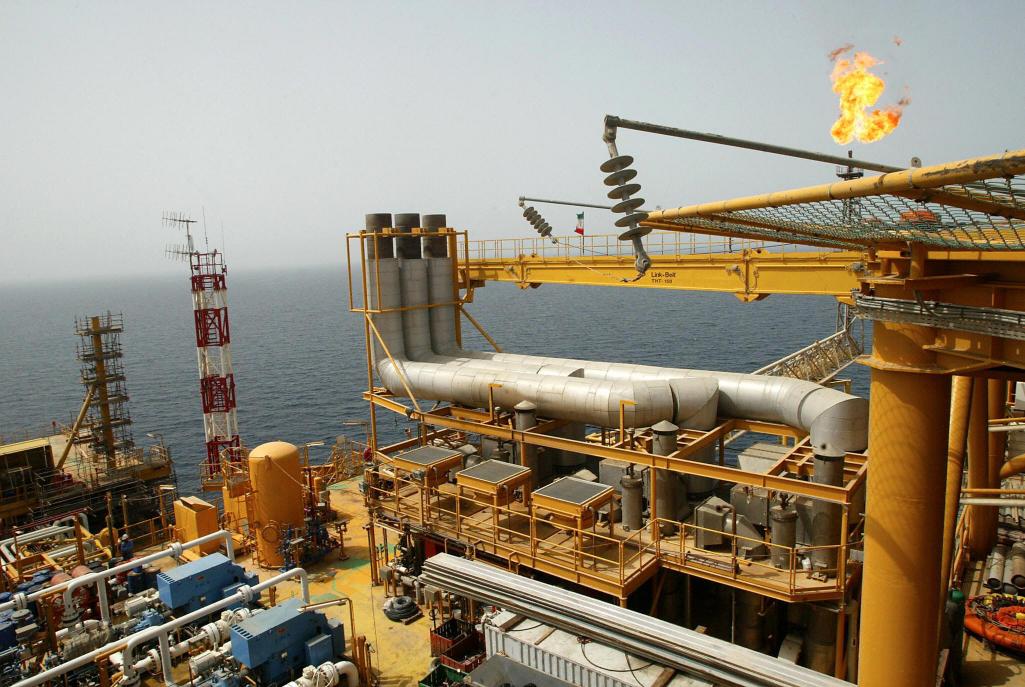The oil minister on Monday laid out policies and plans to further boost crude oil and gas production and said Iran needs to invest $200 billion in its key energy sector over five years.
"Crude oil output will surpass 4 million barrels per day by the end of the fiscal year (March 2017) and reach 4.6 million bpd by 2020," Bijan Namdar Zanganeh said on the sidelines of an energy conference in Tehran, Shana, Oil Ministry's official news service, reported.
Iran's combined output of oil and gas condensates—an ultra light type of crude—is now slightly above 3.8 million bpd, government data shows.
Zanganeh said production of condensates, which is extracted from gas reservoirs in the Persian Gulf, will reach 700,000 barrels a day by next March before rising to 1 million bpd in the following year.
According to the minister, Iran's total crude and condensates production would rise to 4.7 million barrels a day by the end of Q1 2017.
Earlier in the day, the managing director of the National Iranian Oil Company, Ali Kardor, gave a marginally different figure for current oil output -- 3.9 million bpd.
The international oil market has been saturated with supplies and prices are down by more than half over the past two years. The Organization of Petroleum Exporting Countries will meet next month to seek agreement on how to put into effect a planned cut in the group’s output. It also is seeking output curbs from non-members, namely Russia, the world's second largest oil exporter after Saudi Arabia.
OPEC decided last month in Algeria to reduce its collective production to between 32.5 million and 33 million barrels a day to rein in a global glut and support prices, though it may exempt Iran from any cuts.
Iran lost its position as OPEC’s second-biggest producer after international sanctions were tightened in 2012 over the nuclear program dispute. Tehran has defended its move to ramp up output and restore its pre-sanctions global market share.
Amirhossein Zamaninia, deputy oil minister for international affairs, told reporters on Monday that the country pumped 4.085 million barrels a day before sanctions were imposed on its economy. “We need to reach pre-sanctions production levels,” he said.
OPEC will discuss individual production quotas for its members at a meeting in November, Zamaninia said.
Gas Race With Qatar
Iran expects to match Qatar's gas production from South Pars Gas Field within six months.
"The launch of several South Pars phases by the yearend will match Iran's gas output with Qatar from the joint field," Zanganeh noted.
South Pars is the world's largest gas field shared between Iran and Qatar, covering an area of 3,700 square kilometers of Iran’s territorial waters in the Persian Gulf. It adjoins Qatar’s North Field, which measures 6,000 square kilometers.
Gas production is slated to reach 900 million cubic meters per day by the fiscal yearend in March and exceed the 1-bcm/d mark in the following year.
"Phases 17-21 of South Pars will start production this year," the minister said, adding that a major contract is expected to be signed to develop Phase 11. He did not provide details.
Zanganeh was also optimistic about tapping into the South Pars oil layers after years of development.
"This year, we will extract crude from the South Pars' oil layer. We will further increase output (from the oil layer) under the new model of contracts," Zanganeh said, referring to Iran's new contractual framework for oil and gas projects, dubbed as Iran Petroleum Contract.
The oil layer of South Pars is located 130 kilometers off Iran's coast in the Persian Gulf with an estimated 7 billion barrels of oil in place. Iran expects to start production at 20,000-35,000 barrels a day.
Massive Investments
Zanganeh said the new model of oil and gas contracts, which is to be used for exploration and production projects as well as enhancing rates of oil recovery in operational fields, will help attract billions of dollars in new investments.
"Iran's oil industry needs $200 billion in investments by the end of the sixth five-year economic development plan (2016-21). It includes $130 billion in the upstream sector, $50 billion in petrochemical industry and $15 billion in (downstream) refinery projects."
He added that IPC would help facilitate the transfer of cutting-edge technology to Iran's oil industry which was largely deprived of new investments and equipment during the sanctions era.
In a statement last week, the NIOC called on foreign corporations to submit documents to be vetted for new oil and gas tenders.
International exploration and production companies as well as integrated oil firms have been invited to submit their credentials by Nov. 19. NIOC will issue the final list of eligible companies on Dec. 7.
The South Azadegan Oilfield near the border with Iraq is expected to be the first project to be put out to tender for multinationals.


